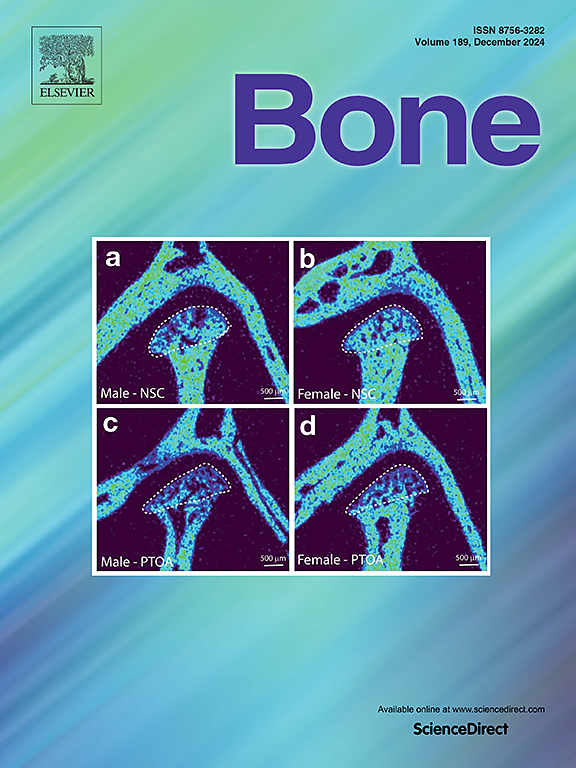Notch signaling in osteoblast progenitor cells is required for BMP-induced bone formation
IF 3.5
2区 医学
Q2 ENDOCRINOLOGY & METABOLISM
引用次数: 0
Abstract
Notch signaling is active during bone formation and prior studies have shown that it is required for both robust intramembranous and endochondral bone regeneration. Particularly, the systemic blockade of Notch signaling has been shown to inhibit BMP-induced bone formation in a murine calvarial defect model. In this study, we genetically disrupted the expression of both the dominant Notch receptor, Jagged-1, and the essential Notch signaling transcription factor Rbpj in osteoblast progenitors during calvarial bone healing. We found that Jagged-1 (and Jagged-2) expression by alpha Smooth Muscle Actin (αSMA) expressing progenitors is required for bone formation. Similarly, we found that Notch transcriptional activity within the αSMA lineage is required for BMP-induced bone regeneration. Inhibition of Notch signaling in the αSMA lineage resulted in decreased osteoblast progenitors, reduced vascularization, and sustained inflammation 10 days post-injury, with enhanced inflammation still present 42 days post-injury. We conclude that Jagged ligand induced Notch signaling within the osteoblast progenitor lineage is therefore required for bone morphogenetic proteins (BMP) induced bone regeneration. Modulation of Notch signaling may represent a new approach to promote bone repair.
成骨细胞祖细胞中的Notch信号是bmp诱导骨形成所必需的。
Notch信号在骨形成过程中是活跃的,先前的研究表明,它是强健的膜内和软骨内骨再生所必需的。特别是,在小鼠颅骨缺损模型中,Notch信号的系统性阻断已被证明可以抑制bmp诱导的骨形成。在这项研究中,我们从基因上破坏了颅骨骨愈合过程中成骨细胞祖细胞中显性Notch受体Jagged-1和必需Notch信号转录因子Rbpj的表达。我们发现,表达α平滑肌肌动蛋白(αSMA)的祖细胞表达Jagged-1(和Jagged-2)是骨形成所必需的。同样,我们发现αSMA谱系中的Notch转录活性对于bmp诱导的骨再生是必需的。α - sma谱系中Notch信号的抑制导致成骨细胞祖细胞减少,血管化减少,损伤后10 天持续炎症,损伤后42 天炎症仍然增强。我们得出结论,在成骨细胞祖谱系中,锯齿状配体诱导的Notch信号是骨形态发生蛋白(BMP)诱导的骨再生所必需的。Notch信号的调节可能是促进骨修复的新途径。
本文章由计算机程序翻译,如有差异,请以英文原文为准。
求助全文
约1分钟内获得全文
求助全文
来源期刊

Bone
医学-内分泌学与代谢
CiteScore
8.90
自引率
4.90%
发文量
264
审稿时长
30 days
期刊介绍:
BONE is an interdisciplinary forum for the rapid publication of original articles and reviews on basic, translational, and clinical aspects of bone and mineral metabolism. The Journal also encourages submissions related to interactions of bone with other organ systems, including cartilage, endocrine, muscle, fat, neural, vascular, gastrointestinal, hematopoietic, and immune systems. Particular attention is placed on the application of experimental studies to clinical practice.
 求助内容:
求助内容: 应助结果提醒方式:
应助结果提醒方式:


